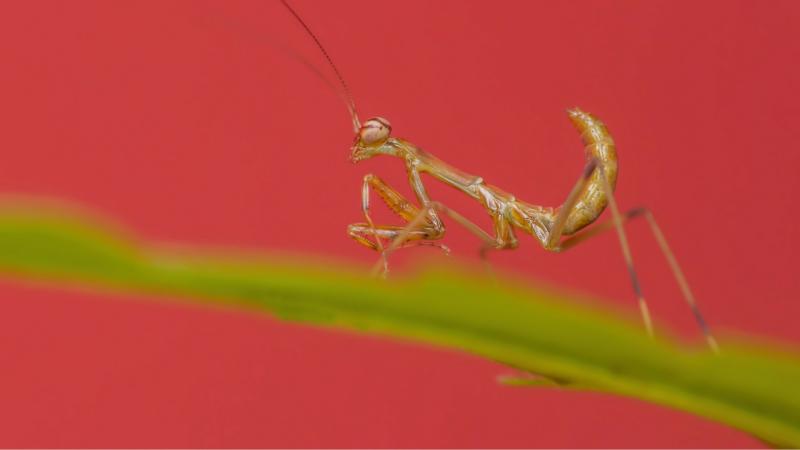
Dr. Vivek Nityananda, a research associate from the Newcastle University presented a lecture titled, “Stereovision and prey detection in the praying mantis”, on the 10th of January 2018 at the Indian Institute of Science. An alumnus of the Center for Ecological Sciences at IISc, Dr. Nityananda was introduced to the audience by his doctoral guide, Prof. Rohini Balakrishnan. The research that he presented to the audience was conducted at the Newcastle University, UK, conducted as a part of research undertaken by Prof. Jenny Read’s group and funded by the Leverhulme trust.
Stereovision refers to the ability of an organism to perceive depth or see objects in 3 dimensions. This kind of vision has evolved independently over evolutionary time in different groups of animals like primates, owls, toads and others. Mantises are the only known invertebrates to possess stereovision. In the highly interactive talk Dr. Nityananda provided the audience with 3D viewing glasses to follow the experiments that the mantises were subjected to. To understand the function and the mechanism of evolution of stereovision in mantises, the researchers placed “3D glasses” on the insects and studied how they reacted to different stimuli.
The experiments presented aimed to understand whether stereovision in mantises served the purpose of range finding, understanding size constancy and detecting camouflage. Mantises as well as humans were subjected to the same kind of experiments.--providing different kinds of stimuli like correlated stimuli, anticorrelated stimuli, uncorrelated stimuli and luminance flipped stimuli the responses of mantises and humans were compared to understand how the mechanism of stereovision works in mantises.
On the latter types of stimuli while human eyes failed, mantises were more successful in detecting the objects presented to them. The study presented by Dr. Nityananda open avenues to a lot of other questions yet to be explored related to the mechanism of eyesight in living beings . The findings of this study also raise other ecological questions about how camouflage works in the wild.
The presentation gave the audience an interesting insight into the world of these agile predators and how even though the end goal might be the same, evolution has shaped different organisms into having different strategies for their survival.






